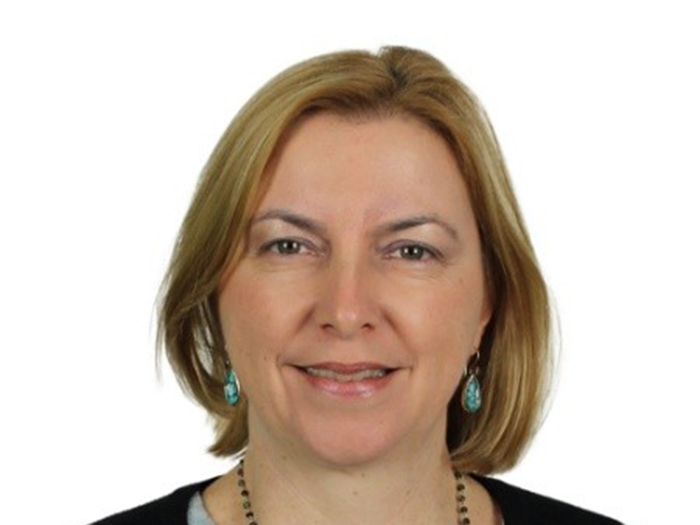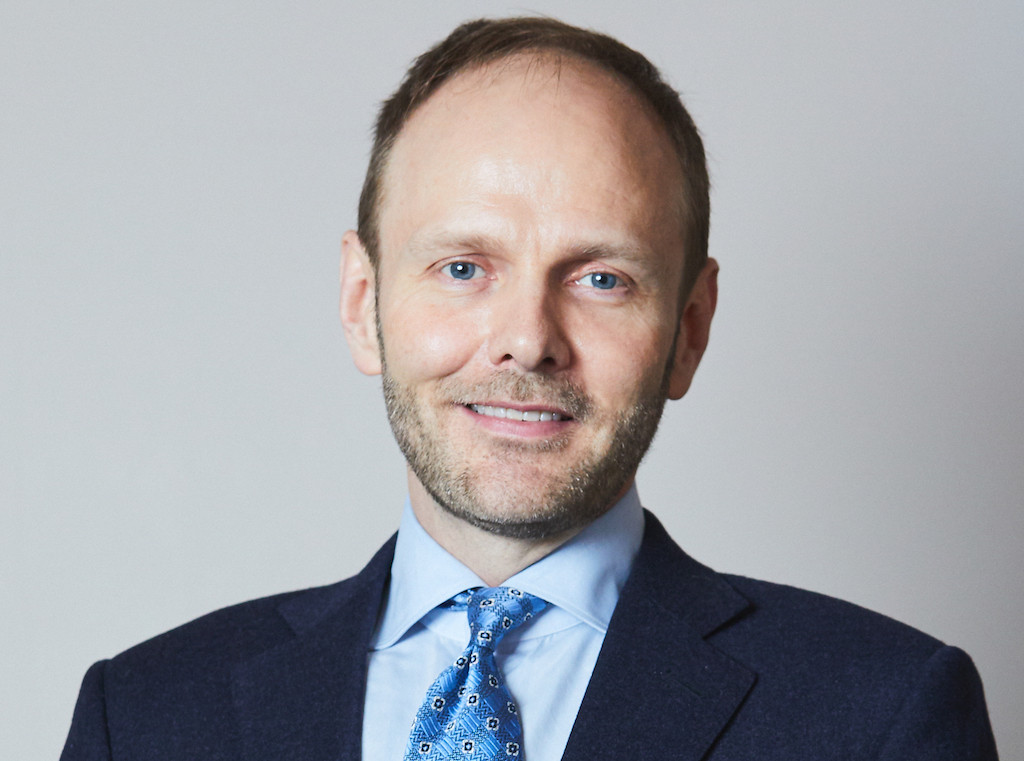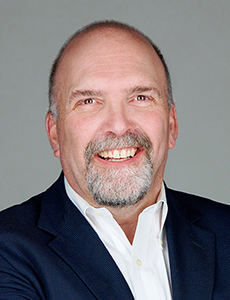Trucordia’s Felix Morgan on Tackling Customer Pain Points in Today’s Market

Michelle Kerr, the Workers’ Compensation Editor & Conference Chair with Risk & Insurance, recently had a conversation with Felix Morgan, the CEO & Board Member of Trucordia, to discuss the role of reinsurance in the insurance industry, the pillars of Trucordia, and their growth and integration strategy.
What follows is a transcript of that conversation, edited for length and clarity.
Risk & Insurance: What can you tell us about Trucordia’s growth and integration strategy, and how does branding play a role in unifying the company and its market approach?
Felix Morgan: Trucordia has experienced rapid growth, currently ranking as the 19th largest P&C broker in the United States. We operate in approximately 40 states and manage around $8 billion in premiums.
Our fast-paced growth has been accompanied by an equally swift integration process. Branding plays a crucial role in unifying our company during this phase, helping to align our teams and shape our approach to various markets.
It’s an exciting time for Trucordia as we leverage our brand to bring together all aspects of our business, including how we perceive and engage with different markets. The brand serves as a unifying force, guiding our strategies and decision-making processes across the organization.
R&I: How can insurance agencies support customers in ensuring they get the right coverage during a hard market?
FM: Addressing price concerns is a frequent challenge we face during hard markets. While these markets mean more dollars for the insurance industry as a whole, they bring pricing issues to the forefront for our clients.
To navigate this, we must excel in our technical understanding of the market’s options and choices. Effective communication with clients is crucial. Showing up at renewal time with a 30% increase leads to difficult conversations, as some clients have experienced with other brokers.
Developing a strong communication plan and strategy with our clients is foundational. We must help them understand the market conditions and the likelihood of price increases. By communicating early and often, these conversations become much smoother than simply presenting high renewal increases.
Ultimately, we must be proficient in our roles to find the right choices and optimize solutions for our clients. Coupled with proactive communication, this approach allows us to better support customers in obtaining the appropriate coverage during challenging market conditions.
R&I: What are your expectations for broker communication with clients, particularly in terms of frequency and timing leading up to policy renewals?
FM: I expect frequent communication starting at least six months before renewal. At that point, brokers should be evaluating the market and the choices that will be available for our clients. This is when the intensity of communication should start to increase, ensuring clients understand what we’re seeing in the market and that we’re being good stewards on their behalf.
Around 90 days out, brokers should provide more specific updates, such as the markets they’re considering, the ones they’ll recommend, and the expected increases. This communication should continue all the way up to the renewal date.
In summary, I believe the key points for increased communication frequency are at the six-month mark, 90 days out, and right at renewal time. Of course, this is in addition to maintaining good client communication throughout the year.
R&I: What risk mitigation strategies does Trucordia employ to support clients, and how do you ensure compliance?
FM: At Trucordia, we have risk experts at both the central and local levels who help assess the risks we insure and ensure that we have the right policies in place. For construction projects, we send someone on-site regularly to provide guidance on necessary coverages, processes that ensure compliance, and areas of risk that need to be addressed.
This proactive approach allows us to secure the best markets for our clients. By identifying potential issues early on and implementing appropriate risk mitigation measures, we can better support our clients and maintain a strong compliance record.
R&I: What makes the insurance brokerage industry so interesting to you?
FM: The insurance brokerage industry is never boring because every company and client is unique, with different risks and needs that require tailored solutions. Even within the same industry, clients will have distinct challenges that we can help address.
This diversity keeps the work engaging and dynamic. It’s a constant opportunity to learn, adapt, and provide value to our clients by understanding their specific circumstances and crafting appropriate insurance strategies.
The ever-changing nature of the brokerage business ensures that no two days are the same. It’s an intellectually stimulating field that demands continuous growth and innovation to meet the evolving needs of our diverse clientele.
R&I: How does Trucordia’s wide network of offices help provide the right solutions for your customers?
FM: At Trucordia, we are fortunate to have a diverse range of talented people with technical skills in almost every area, thanks to our numerous acquisitions. While we have verticals and specialty areas of focus like other brokerages, our expertise is truly broad.
As we bring our different offices together under one umbrella, we drive greater collaboration and communication. This allows us to leverage our collective knowledge more effectively.
When we approach clients, we do so as a single company with deep expertise, rather than as separate offices. This enables us to solve the challenges in today’s market and provide a best-in-class service experience for our clients.
R&I: What industries are Trucordia’s specialties and areas of focus?
FM: Trucordia has a handful of industries that we prioritize and specialize in. Transportation is one of those key verticals. We have great depth and expertise in serving both fleet and non-fleet trucking companies.
Another area of focus is banking and financial institutions, where we provide valuable services. Additionally, we have significant experience and large clients in the construction and real estate industry.
These industries represent our core strengths, and we will continue to build resources and support around these verticals.
R&I: What is your perspective on the role of reinsurance in the insurance industry, especially during a consolidating market cycle?
FM: Reinsurance is a critical, foundational element of the insurance industry as a whole, not just for Trucordia but for our competitors as well. When the market is in a consolidating cycle, which is neither a hard market nor a soft market, our goal is to generate profits on a gross basis, with less reliance on quota share reinsurance.
In these market conditions, we strategically focus on specialty lines of business. Specialty lines are typically characterized by bespoke underwriting, thorough risk evaluation, lower frequency, and higher severity. For these lines, we utilize excess reinsurance to safeguard our balance sheet.
R&I: How is technology changing so rapidly impacting your industry?
FM: Technology is transforming our industry at an unprecedented pace. It’s not just about adopting new tools; it’s about fundamentally rethinking how we operate and serve our customers.
In our company, we’re leveraging technology to streamline processes, enhance efficiency, and deliver more personalized experiences. For example, we’re using AI and machine learning to analyze vast amounts of data, enabling us to make more informed decisions and offer tailored solutions to our clients.
Moreover, technology is enabling us to innovate and develop new products and services that were previously unimaginable. It’s opening up new opportunities and allowing us to stay competitive in an ever-evolving market.
R&I: How is technology playing a foundational role in how Trucordia supports its customers?
FM: Technology is integral to everything we do at Trucordia. It enables us to provide best-in-class service and speak with one voice to our clients by using common platforms and implementing company-wide standards.
From the client service and sales side, we’re rolling out standards to enhance the customer experience. For example, in the construction industry, certificates of insurance (COIs) are a significant part of the daily process, and we must have the right tools in place to handle them efficiently.
The key to technology is not implementing it for its own sake but identifying use cases that enable a better experience for our clients. Early in my tenure, we built a large business intelligence platform that we use today to optimize carrier placements and create better value for our business.
Technology is not something we implement and walk away from. It’s an evolving process, and we’ll continue to seek out and implement best-in-class solutions that drive value for our clients.
R&I: How has the pace of change in the industry impacted your approach to innovation and staying competitive?
FM: The pace of change in the industry is faster than ever, and it’s clear that innovation is not a one-and-done endeavor. At Trucordia, we recognize that to stay competitive, we must continuously adapt and evolve our strategies.
This means consistently reassessing our approach, identifying new opportunities, and implementing innovative solutions. It’s a constant process of learning, refining, and pushing forward to stay ahead of the curve in an increasingly dynamic market.
R&I: What role does organic growth play in Trucordia’s strategy, and how do you approach it?
FM: Organic growth is a key part of our strategy at Trucordia. It starts with our commitment to providing clients with a standardized view of how we service them and the services we provide, including clear communication.
We also focus on providing value to our team. We have a great team that provides a lot of services, and we must take care of them and treat them well so that they, in turn, treat our clients well.
Retention is really where organic growth starts. If we have 90% retention, it means we’re losing 10% of the base that we’re replenishing every year. Our goal is to ensure clients feel like they have a great home with us and don’t want to leave.
On the acquisition side of organic growth, we leverage our technology, services, and communication to drive customer acquisition. We have some great best-in-class solutions that we have standardized around, and they are working effectively every day.
R&I: What are the top pain points for your customers right now, and how are you addressing their needs that they can’t find elsewhere?
FM: Price is at the top of the list for our clients. They often struggle to understand the hard market and the increases in price, especially in states like Florida and California where it’s becoming increasingly difficult to obtain coverage. Insurers are growing more risk-averse in these markets as loss ratios rise.
I’ve had several clients come to me saying they simply can’t get coverage on basic items like homes and cars. It’s a great opportunity for us, given our breadth of premium, to find solutions for these clients.
Without an organization that has the depth and breadth that we do, it can be a real challenge to provide coverage in today’s market. Our ability to offer solutions in this environment sets us apart and allows us to address our customers’ most pressing needs. &










